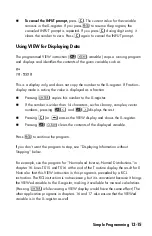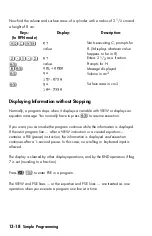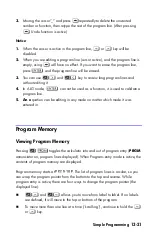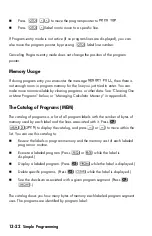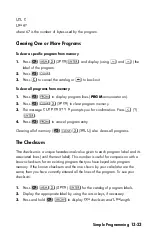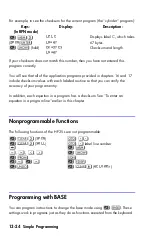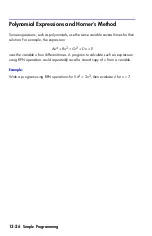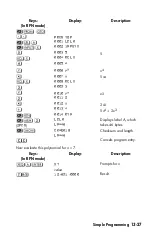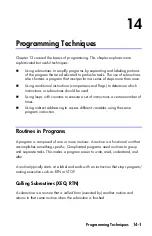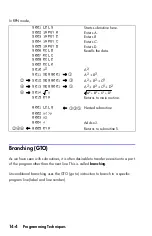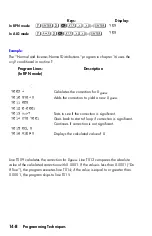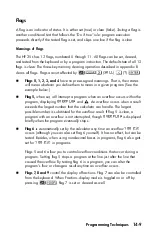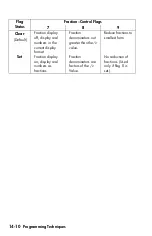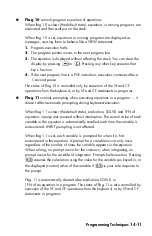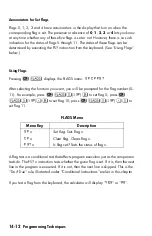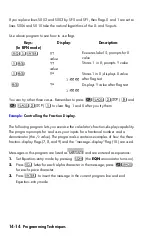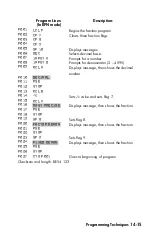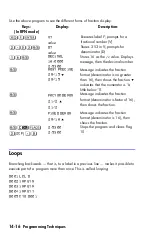
14-1
14
Programming Techniques
Chapter 13 covered the basics of programming. This chapter explores more
sophisticated but useful techniques:
Using subroutines to simplify programs by separating and labeling portions
of the program that are dedicated to particular tasks. The use of subroutines
also shortens a program that must perform a series of steps more than once.
Using conditional instructions (comparisons and flags) to determine which
instructions or subroutines should be used.
Using loops with counters to execute a set of instructions a certain number of
times.
Using indirect addressing to access different variables using the same
program instruction.
Routines in Programs
A program is composed of one or more
routines.
A routine is a functional unit that
accomplishes something specific. Complicated programs need routines to group
and separate tasks. This makes a program easier to write, read, understand, and
alter.
A routine typically starts at a label and ends with an instruction that stops program/
routing execution such as RTN or STOP.
Calling Subroutines (XEQ, RTN)
A
subroutine
is a routine that is
called from
(executed by) another routine and
returns to
that same routine when the subroutine is finished.
Summary of Contents for 35s
Page 1: ...HP 35s scientific calculator user s guide H Edition 1 HP part number F2215AA 90001 ...
Page 14: ...12 Contents ...
Page 15: ...Part 1 Basic Operation ...
Page 16: ......
Page 46: ...1 30 Getting Started ...
Page 63: ...RPN The Automatic Memory Stack 2 17 A Solution ...
Page 64: ...2 18 RPN The Automatic Memory Stack ...
Page 74: ...3 10 Storing Data into Variables ...
Page 180: ...12 14 Statistical Operations ...
Page 181: ...Part 2 Programming ...
Page 182: ......
Page 246: ...15 12 Solving and Integrating Programs ...
Page 270: ...16 24 Statistics Programs ...
Page 284: ...17 14 Miscellaneous Programs and Equations ...
Page 285: ...Part 3 Appendixes and Reference ...
Page 286: ......
Page 308: ...B 8 User Memory and the Stack ...
Page 322: ...C 14 ALG Summary ...
Page 336: ...D 14 More about Solving ...
Page 346: ...E 10 More about Integration ...
Page 352: ...F 6 Messages ...
Page 370: ...G 18 Operation Index ...
Page 382: ...Index 12 ...

